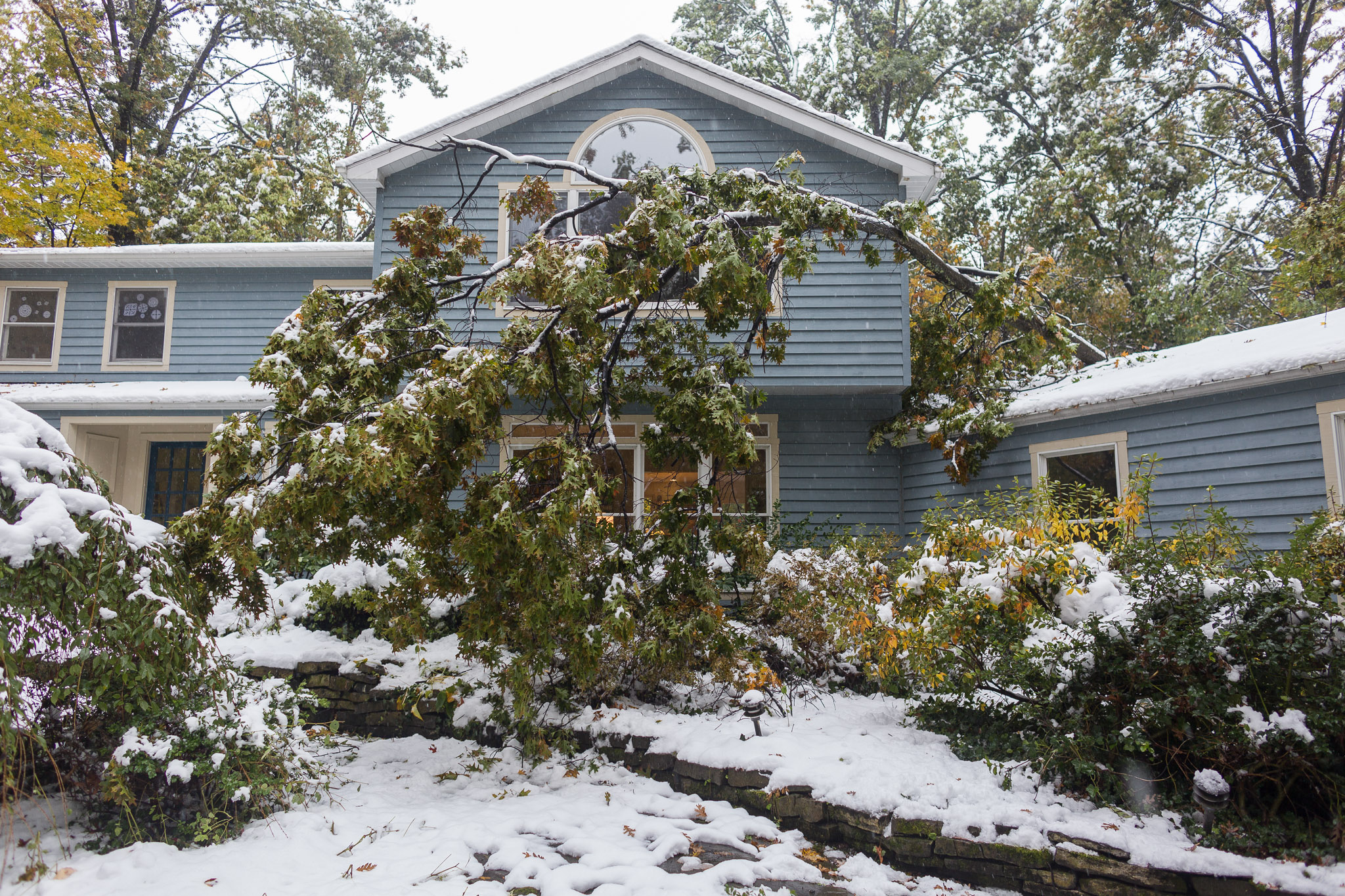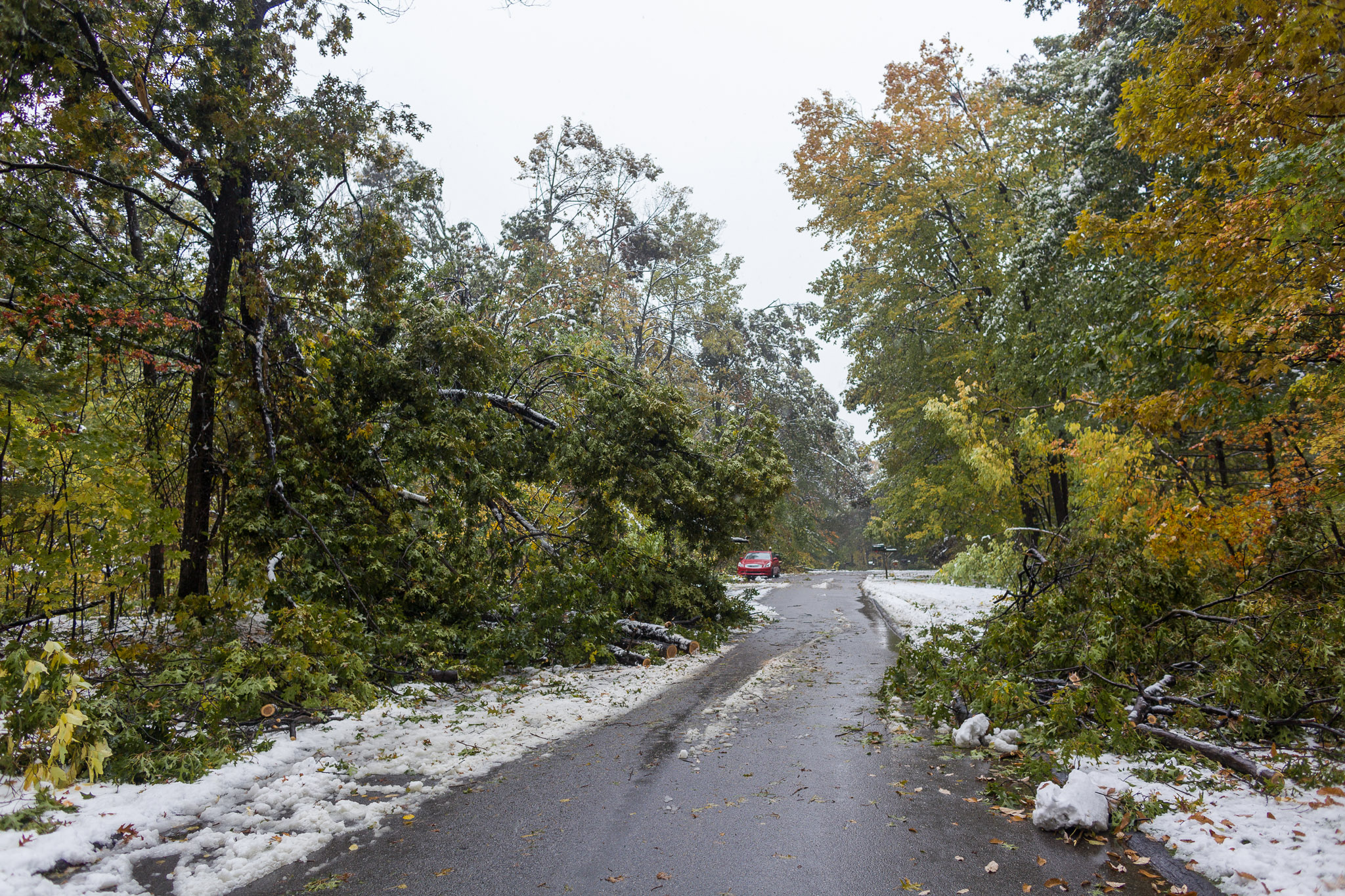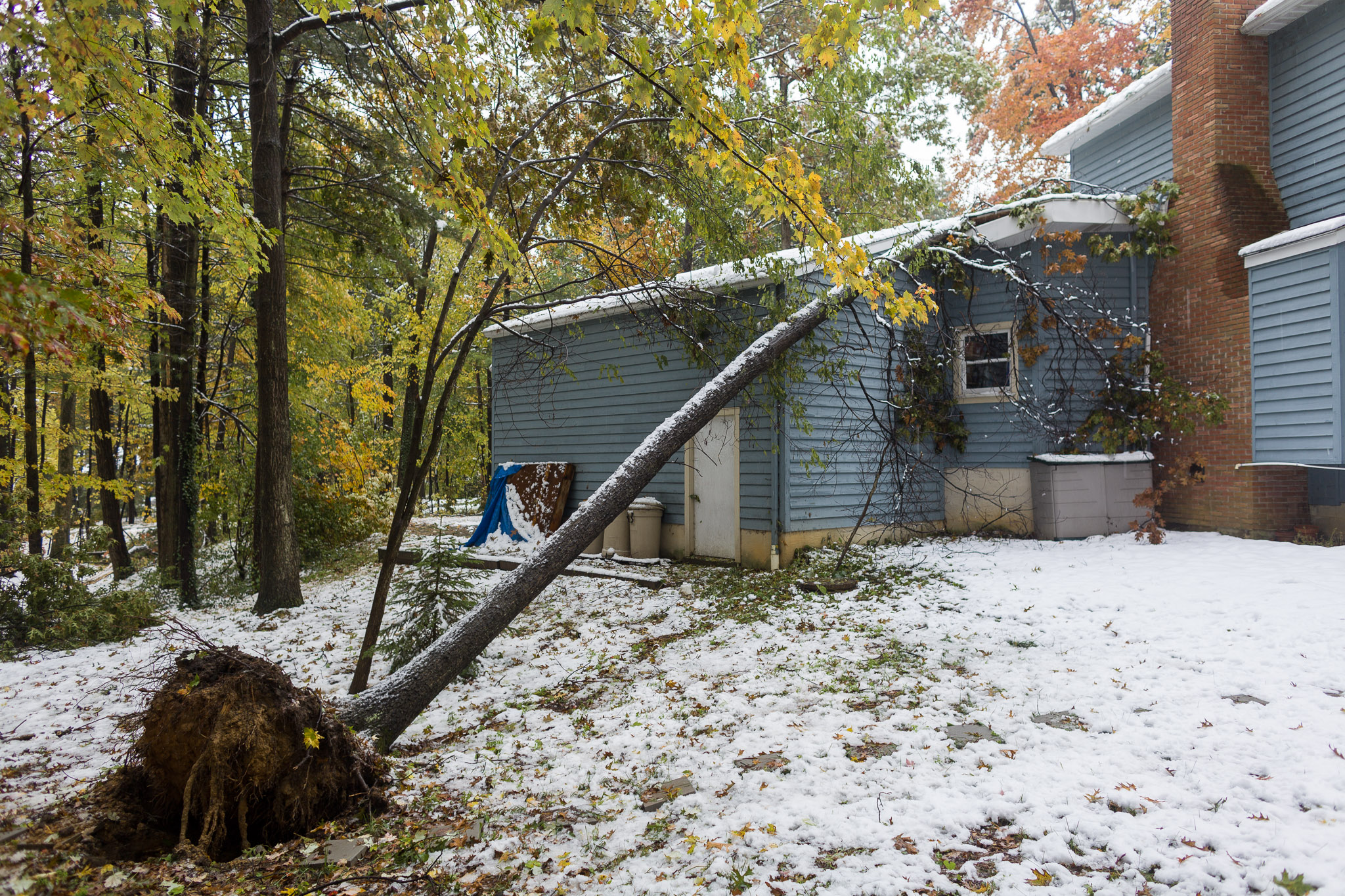Environmental issues in my life
My hometown, State College, PA, in central Pennsylvania, resides in one of the gloomiest areas of the United States1. Most years, snow starts in October & continues through April. In October 2009, we received more than snow, & got a massive ice storm, early enough that nearly all the foliage remained on trees. Layer after layer of freezing rain, snow, & ice combined on still-green leaves & branches, weighing them down. My house is surrounded by trees, & the storm caused one of our largest oaks to collapse onto the house, crushing through the roof of one room.


The sprawl was impressive: the diameter of the crown of this oak tree covered the majority of the windows on both floors of the house, making it dark for days with limited natural light & no power for nearly 2 days. School had to be canceled since roads across town were rendered impassable. Luckily, the room impacted by the tree was a connecting mudroom & not a bedroom—a different tree on our property falling onto the opposite side of the house could have seriously injured me. Even our landline phone lost service, & my mom listened to a battery-operated radio to hear news.

While out of the ordinary, rising temperatures increased the likelihood of that storm measurably: since 1958, Pennsylvania’s extreme rainfall events have increased 55%. Yet after a few days, the power was back & the roads were cleared, after a month, we had our house damage repaired & life moved on. Now we have photos & a memory of this wild storm, & while one tree was fully uprooted, our lives were not.

This one experience is part of a larger trend in my life: I’m of a level of privilege—financially, career direction, & my stage of life—plus pure luck, that I’ve been able to float around without experiencing any lasting impacts of environmental issues. While poorer Pennslvanians in more rural areas witnessed widespread fracking over my lifetime, flooding in the capital, drought in the agricultural areas, I’ve remained insulated.
I’ve spent most seasons since summer 2018 moving to a different place on a temporary basis every month or two since summer 2018. I’ve lived in State College, San Francisco, NYC, several towns in both Vermont & Indiana, & countless trips—dozens of road trips & plane tickets per year. Though I’m deeply aware of climate impacts, failing infrastructure, a massive storm, crop failure, or environmental destruction in any one location has never affected me for any lasting duration. I have no parallel in my life to the flooding in Kentucky this year, or the wildfires across California.
But even without the iconic storm or crippling air pollution other communities experience, even in one of the most climate-resilient areas of the US, there are subtler ways environmental issues crop up. My county’s rate of Lyme Disease has grown 7x in the last decade, with warmer temperatures fueling an earlier larval peak of the blacklegged (deer) ticks that spread the disease. In the last century, temperatures in Pennsylvania have risen around 2°F, & average annual precipitation has increased about 10%. These changes: in the intensity & duration of rain or snow storms, erosion from that precipitation, winter nighttime temperatures, in invasive species moving north & nesting in our house, make themselves increasingly known, flashing warning signs even in the gloomiest of towns.
Footnotes
-
Gloominess is not the easiest index to measure, but meteorologist Brian Brettschneider compiled a ranking based on cloud cover + precipitation + wet days. State College maintains a population too small for his index (≥250k), but our dreariness resides geographically between top-ranking Buffalo & Pittsburgh, with extra cloud cover from being in a valley. ↩